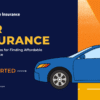Car insurance is more than just a legal requirement—it’s a crucial financial safety net that protects you, your vehicle, and others on the road. Yet, many drivers aren’t entirely sure what their policy covers until they need to file a claim. Understanding the key components of your car insurance policy can help ensure you’re adequately protected and not paying for unnecessary coverage.
1. Types of Car Insurance Coverage
a. Liability Coverage
Liability insurance is mandatory in most regions. It covers:
- Bodily Injury Liability: Medical expenses, lost wages, and legal fees if you’re at fault in an accident that injures someone else.
- Property Damage Liability: Repairs or replacement costs for damage you cause to another person’s vehicle or property.
b. Collision Coverage
This protects your vehicle after a crash, regardless of who is at fault. It typically covers repairs or the actual cash value if your car is totaled.
c. Comprehensive Coverage
This type of insurance covers non-collision-related damages such as:
- Theft
- Vandalism
- Fire
- Natural disasters
- Falling objects
d. Personal Injury Protection (PIP) or Medical Payments
Depending on your location, you may have one of these coverages to pay for medical expenses for you and your passengers, regardless of fault.
e. Uninsured/Underinsured Motorist Coverage
If you’re hit by a driver with little or no insurance, this coverage helps pay for your injuries and sometimes property damage.
2. Optional Add-ons to Consider
Many insurers offer extra features for enhanced protection:
- Roadside Assistance
- Rental Car Reimbursement
- Gap Insurance: Covers the difference between your car’s value and what you owe on your auto loan if it’s totaled.
- Custom Equipment Coverage: Ideal for modified or upgraded vehicles.
3. Factors That Affect Your Coverage and Premiums
Several elements influence your policy’s price and effectiveness:
Understanding these can help you choose the right balance between premium cost and coverage level.
4. Are You Really Covered?
To know whether you’re properly insured:
- Review your policy details annually.
- Consult your insurance agent for clarification.
- Assess your driving habits, vehicle value, and personal risk tolerance.
- Ensure coverage limits are sufficient to protect your assets.
Conclusion
Car insurance isn’t one-size-fits-all. Taking the time to understand what your policy includes—and what it doesn’t—can save you from financial hardship and help you make informed decisions. Don’t wait for an accident to find out if you’re covered. Stay proactive, stay informed, and stay protected.
















